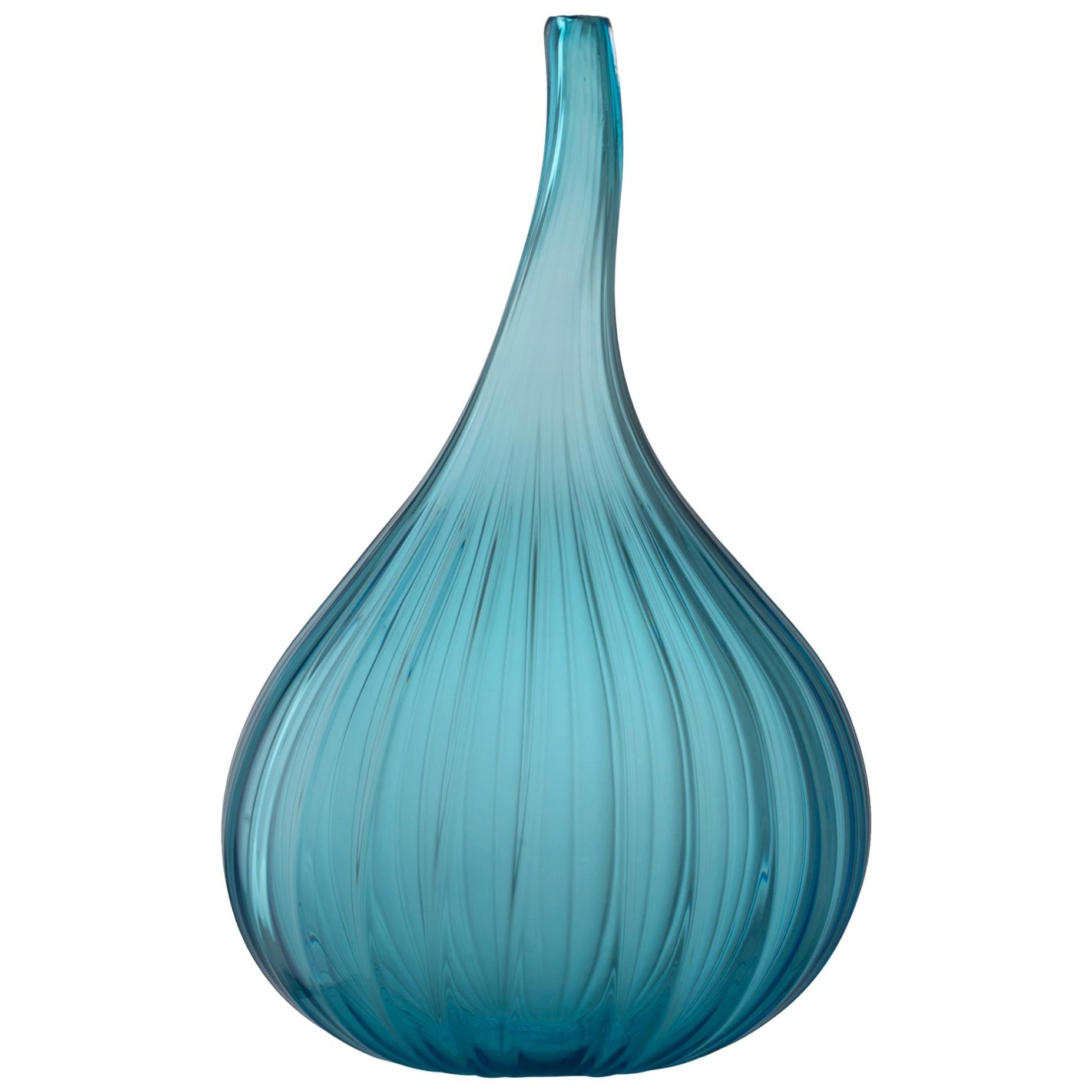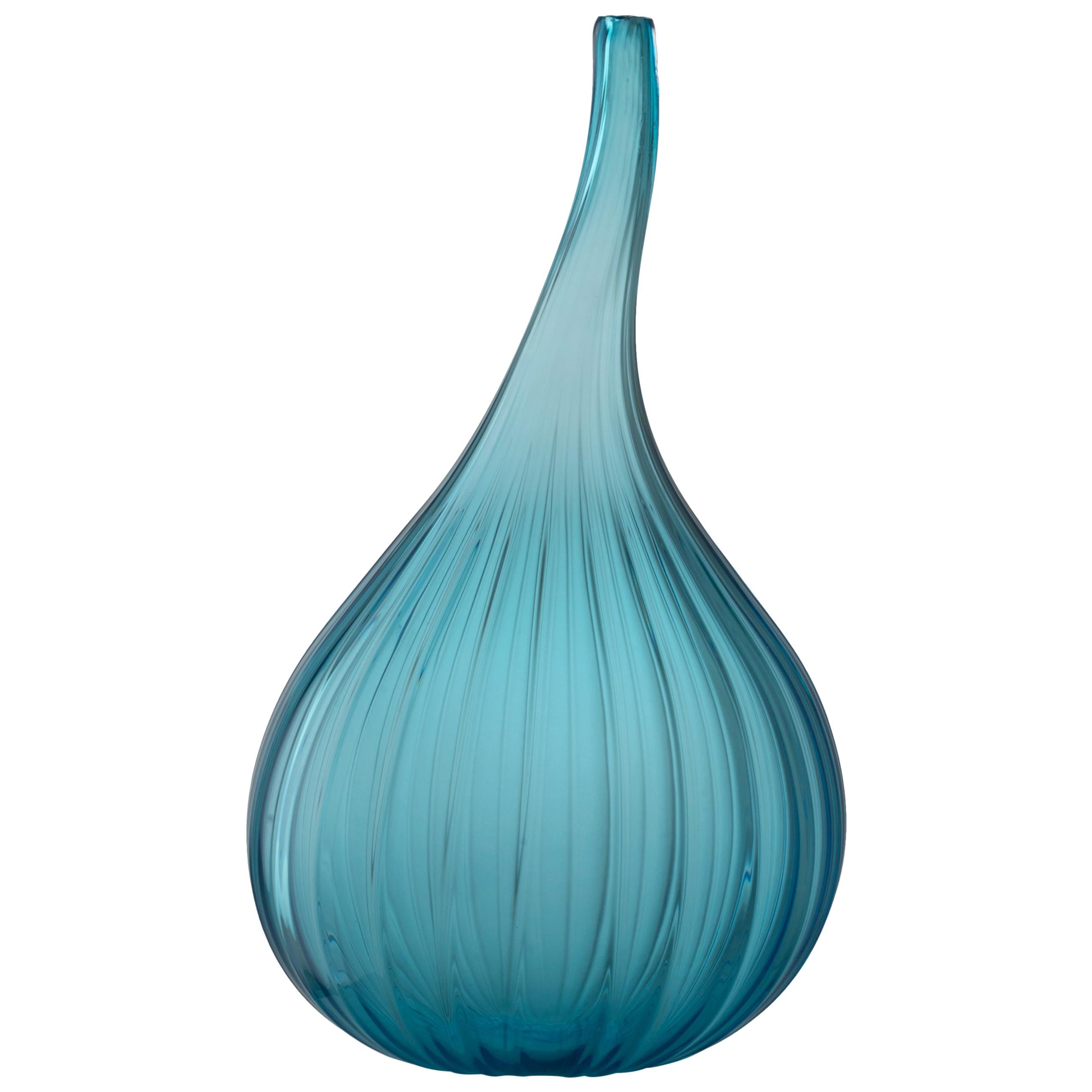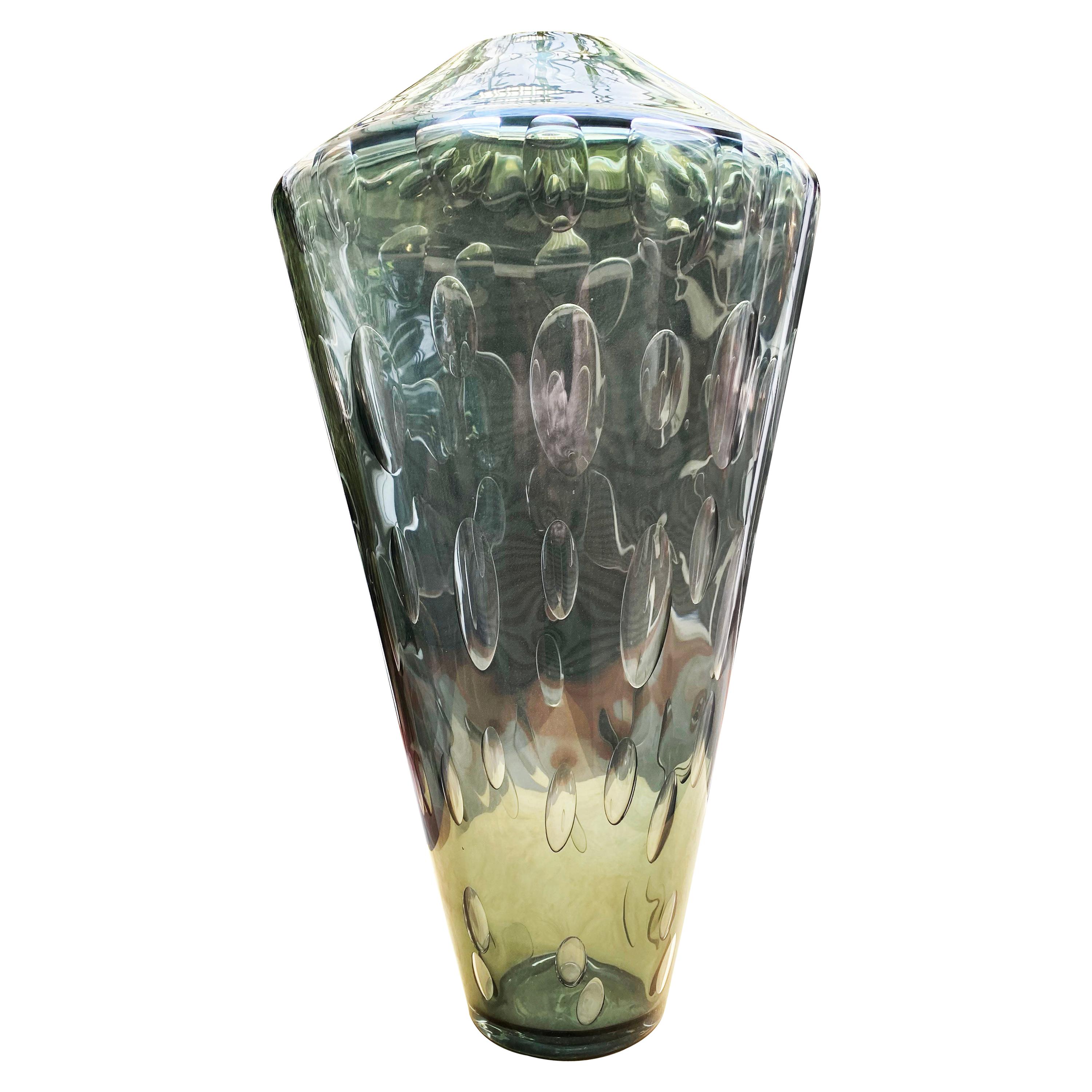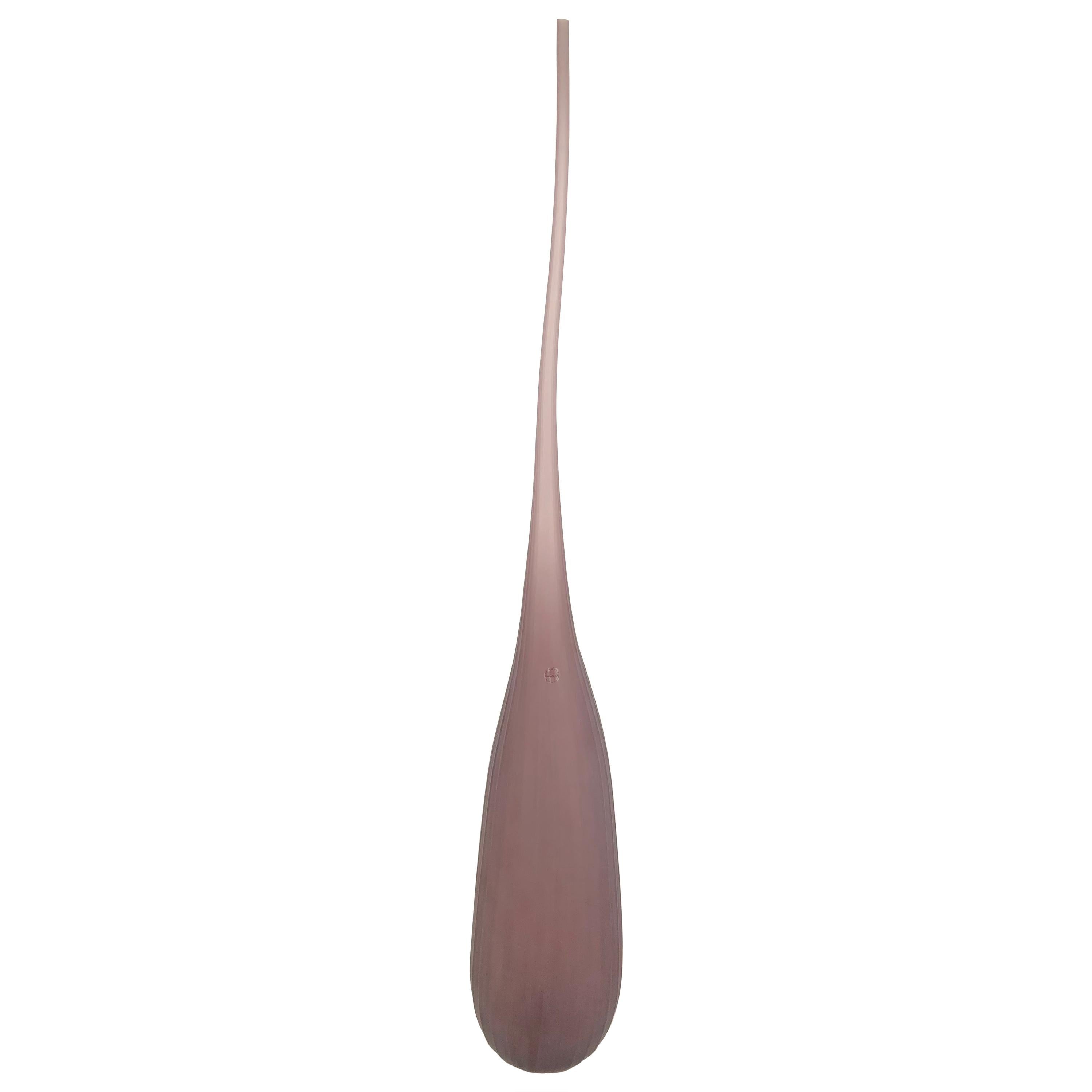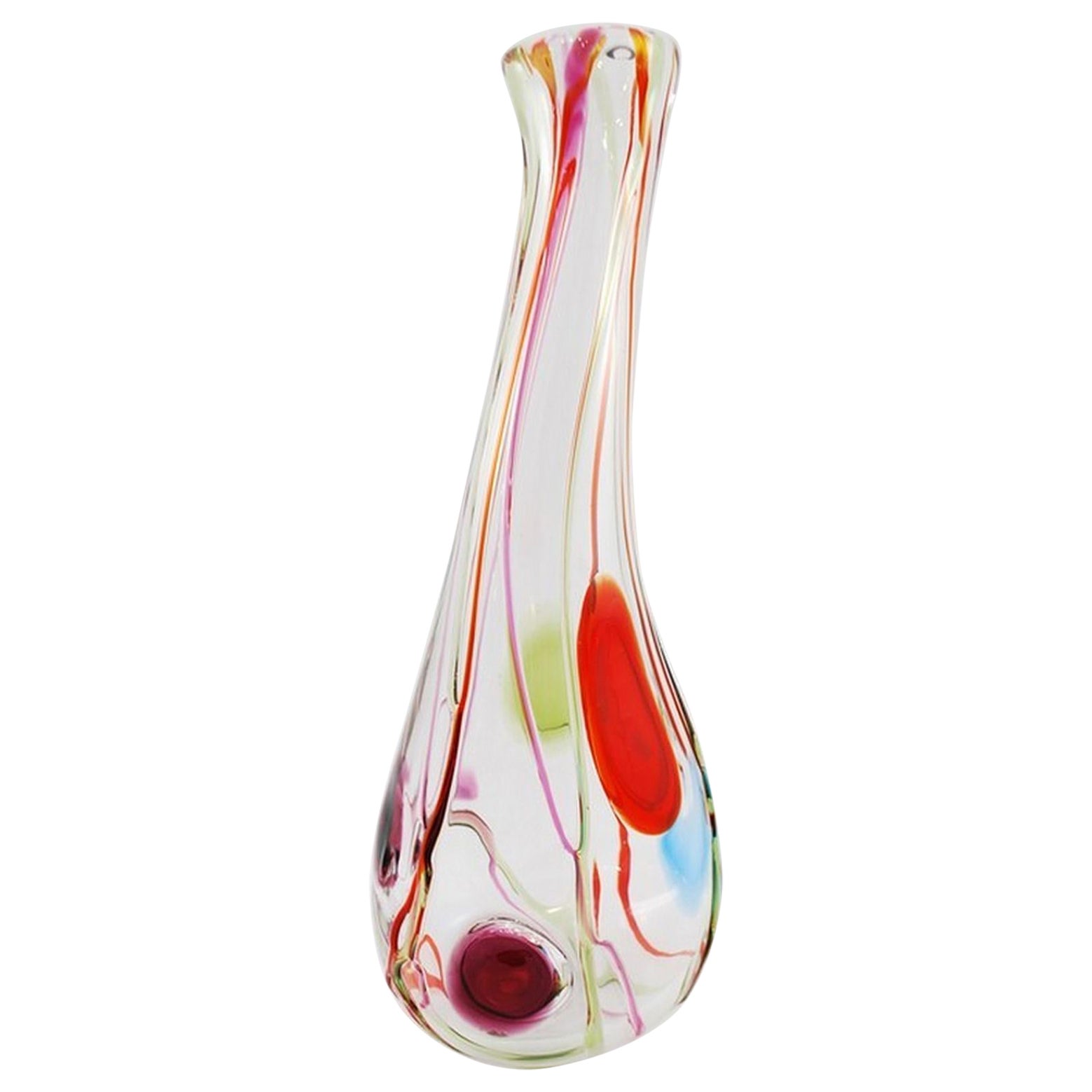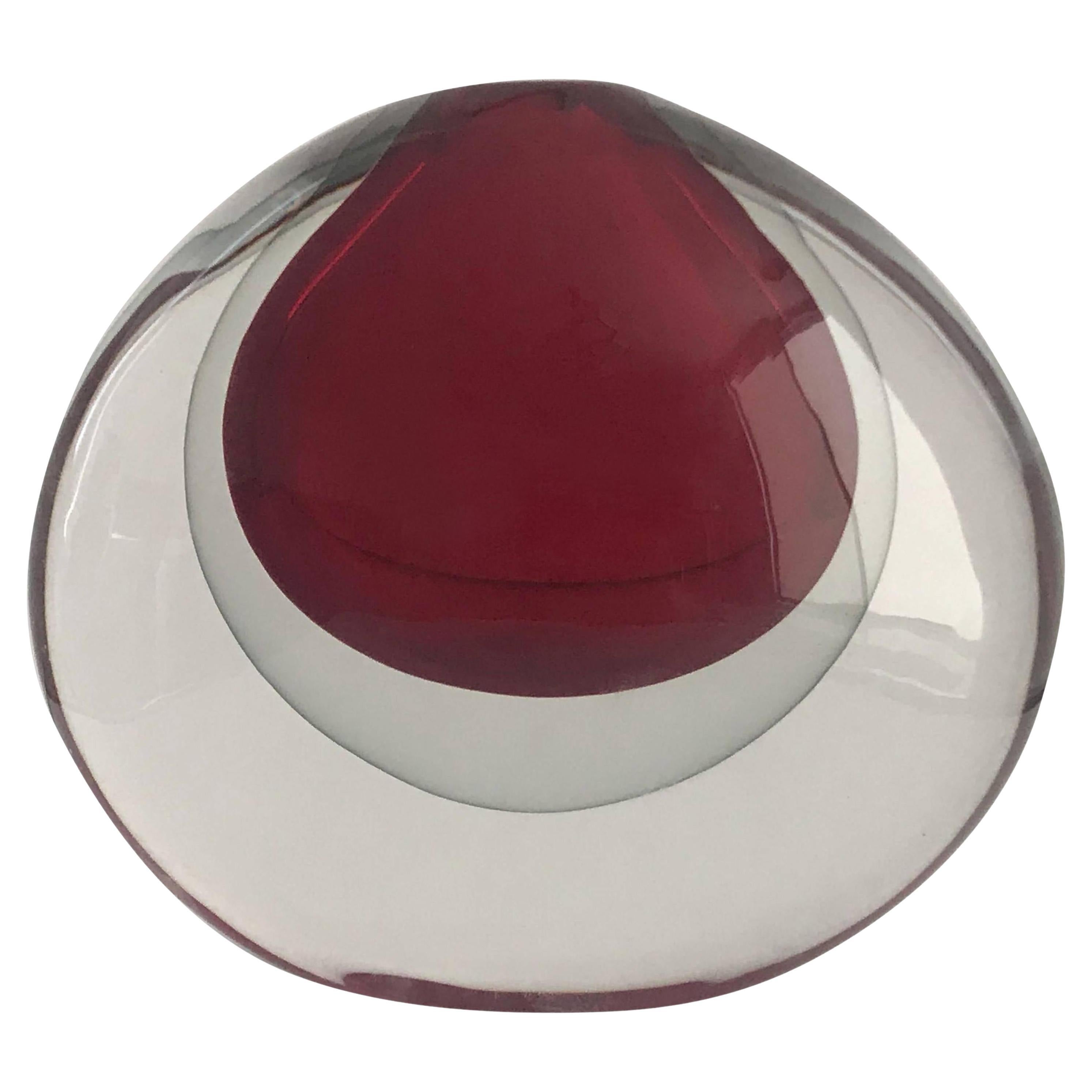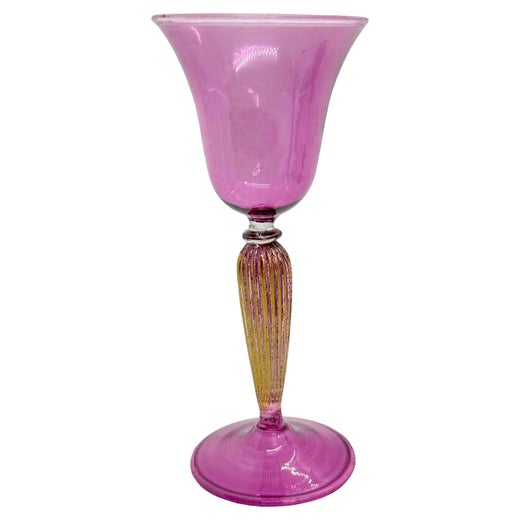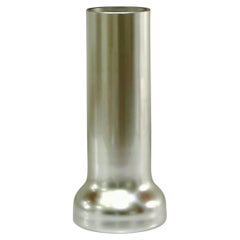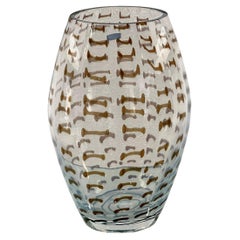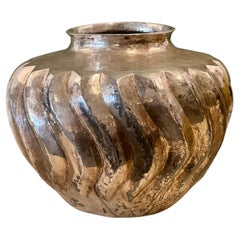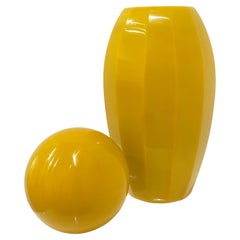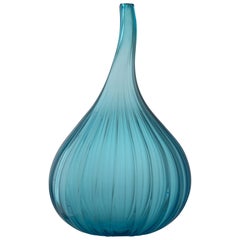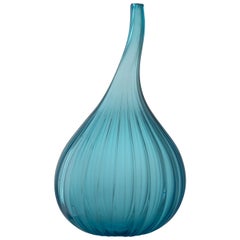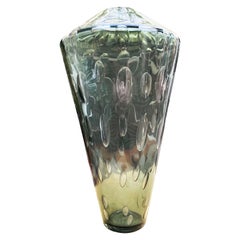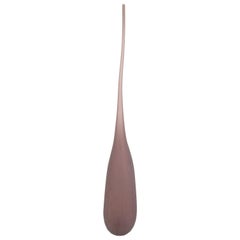Renzo Stellon for Salviati Orange Satin Finish "Drops" Vase 2003
Angaben zum Objekt
- Schöpfer*in:Salviati (Schöpfer*in),Renzo Stellon (Designer*in)
- Maße:Höhe: 38,1 cm (15 in)Breite: 22,86 cm (9 in)Tiefe: 22,86 cm (9 in)
- Stil:Moderne (Aus dem Zeitalter)
- Materialien und Methoden:
- Herkunftsort:
- Zeitalter:
- Herstellungsjahr:2003
- Zustand:Abnutzung dem Alter und der Nutzung entsprechend. Very minor wear to base but no defects or damage noted, A near pristine example.
- Anbieterstandort:Cathedral City, CA
- Referenznummer:Anbieter*in: OC98371stDibs: LU8352245460032
Salviati
Salviati unterstützte nicht nur die Wiederbelebung der schwächelnden Murano-Glasindustrie im 19. Jahrhundert, sondern das Unternehmen wurde auch für seine innovativen Glasherstellungstechniken weltberühmt und revolutionierte die Kunst der Mosaike und des Glasdesigns.
Die Geschichte von Salviati glass beginnt mit dem in Vicenza geborenen Anwalt und Unternehmer Antonio Salviati. Seine Liebe zur Glaskunst und zu den Mosaiken von Murano inspirierte ihn zur Gründung seiner eigenen Mosaik- und Glasmanufaktur, der Salviati Dott. Antonio's Firma Bartolomeo, 1859 in Venedig. Die Glasmacher in der Region hatten mit dem schlechten politischen Klima und der wachsenden Konkurrenz in den Nachbarländern zu kämpfen, und Salviati hatte ursprünglich gehofft, die Glasherstellung in Murano wiederzubeleben, um die verfallenen Mosaike in den örtlichen Kathedralen zu restaurieren.
1864 stellte Salviati auf der "Ersten Glasmacherausstellung" ein monumentales Glasmosaik aus, das die Goldmedaille gewann. Sein preisgekröntes Mosaik festigte den Ruf seines Unternehmens als erstklassiger Glashersteller, was bald die Aufmerksamkeit internationaler Investoren, insbesondere aus Großbritannien, auf sich zog.
1866 eröffneten Salviati und C.C. in London mit der Unterstützung des Historikers William Drake und des Diplomaten Sir Austen Henry Layard. In der Zwischenzeit hat die Firma Salviati ihren Sitz am Rio dei Vetrai in Murano.
In den späten 1800er Jahren weitete Salviati und C. seine Produktion auf Haushaltsglaswaren und Serviergeschirr und dekorative Gegenstände wie Becher, Gläser, Amphoren und Fläschchen aus. Salviati erhielt auch Aufträge zur Herstellung von Mosaiken für die St. Paul's Cathedral und das Houses of Parliament in London, das Pariser Opernhaus und den Palast des Vizekönigs von Ägypten in Alexandria.
Nach dem Tod von Antonio Salviati im Jahr 1890 übernahmen seine Söhne Giulio und Silvio das Unternehmen. Die Familie Barovier - eine Dynastie, die bis ins Jahr 1295 zurückreicht - kaufte die Manufaktur im Jahr 1883, und ein Glasmeister namens Maurizio Camerino, der seine Fähigkeiten bei Salviati verfeinert hatte, wurde mit der Leitung des Unternehmens beauftragt. Nach dem Tod des Glasmeisters im Jahr 1931 übernahmen Camerinos Kinder die Leitung und brachten nach dem Zweiten Weltkrieg eine erfolgreiche Beleuchtungslinie mit Tischlampen und Kronleuchtern auf den Markt.
Im Laufe des 20. Jahrhunderts nahm Salviati von 1958 bis 1972 an mehreren Ausstellungen der Biennale von Venedig teil. 1962 wurde das Unternehmen mit dem Compasso d'Oro für die Vase Marco ausgezeichnet, die von dem Architekten Sergio Asti entworfen wurde.
Seit der Übernahme durch die Umana-Gruppe im Jahr 2015 hat Salviati mit zahlreichen renommierten Designern zusammengearbeitet, wie Federico Peri, Davide Bruno, Renzo Stellon, Alberto Lago und Anna Gili. Salviatis Werke befinden sich in den Sammlungen des Museum August Kestner in Hannover, Deutschland, des Museum of Modern Art und Corning Museum of Glass in New York, des Eretz Museum in Tel Aviv, Israel, und des Murano Glass Museum in Venedig.
Finden Sie antikes Salviati-Glas, darunter Schalen, Vasen, Beleuchtung und mehr.
- VersandAngebot wird abgerufen …Versand von: Cathedral City, CA
- Rückgabebedingungen
Mehr von diesem*dieser Anbieter*in
Alle anzeigen1990er, Deutsch, Minimalistisch, Vasen
Geblasenes Glas
2010er, Polnisch, Moderne, Vasen
Kristall
Ende des 20. Jahrhunderts, Mexikanisch, Moderne, Vasen
Versilberung, Metall
21. Jahrhundert und zeitgenössisch, amerikanisch, Moderne, Vasen
Glas
21. Jahrhundert und zeitgenössisch, amerikanisch, Moderne, Vasen
Metall, Kupfer, Emaille
Frühes 20. Jahrhundert, amerikanisch, Art déco, Vasen
Metall, Stahl, Chrom
Das könnte Ihnen auch gefallen
21. Jahrhundert und zeitgenössisch, Italienisch, Moderne, Vasen
Glas
21. Jahrhundert und zeitgenössisch, Italienisch, Moderne, Vasen
Glas
Anfang der 2000er, Italienisch, Vasen
Muranoglas
20. Jahrhundert, Italienisch, Flaschen
Glaskunst
Ende des 20. Jahrhunderts, Italienisch, Vasen
Glas
Ende des 20. Jahrhunderts, Italienisch, Moderne, Vasen
Geblasenes Glas, Muranoglas
